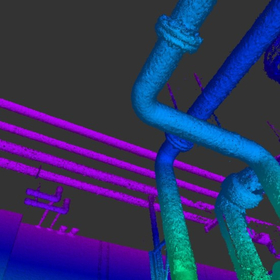[Case Study of 3D CAD Software for Mechanical Design] Nidec Sankyo Corporation
[Free Case Study Provided] Supporting the design quality of LCD glass substrate transport robots!
We would like to introduce a case study of the implementation of "iCAD SX" at Nidec Sankyo Corporation, which develops and manufactures electronic components and system equipment. The company often receives requests for 3D models from client companies, and in some cases of OEM product design, frequent exchanges of drawing data with business partners occur, leading them to consider the introduction of 3D CAD. After implementation, the significant advantage observed in the actual design field was the 3D interference check, which allowed them to identify approximately 10 interferences in advance within 1 to 2 months. Given the prevalence of short delivery times for products, the improvement in design quality was greatly appreciated. [Case Overview] ■Challenges - The advancement of products had rendered 2D design insufficient. ■Results - Approximately 10 interferences were identified in advance within 1 to 2 months. - Design quality was significantly improved. *For more details, please refer to the PDF document or feel free to contact us.
Inquire About This Product
basic information
For more details, please refer to the PDF document or feel free to contact us.
Price range
Delivery Time
Applications/Examples of results
For more details, please refer to the PDF document or feel free to contact us.
Company information
To support Japan's manufacturing, iCAD Corporation is developing the specialized 3D CAD 'iCAD SX V8' focused on mechanical design. iCAD achieves high-speed response, handling 3 million parts in 0.2 seconds, allowing for stress-free design consideration and verification of large-scale equipment and entire production lines consisting of tens of thousands of components. Leveraging its capability to handle vast amounts of information, it is possible to accumulate and utilize the design information necessary for equipment development, including piping, wiring, and control (motion), into a single CAD data set. This single data set can be utilized across various scenarios and departments, from design to manufacturing, assembly, and maintenance. This results in reduced development lead times and improved design quality.


![Key Points for Considering the Introduction of 3D CAD Without Failure [Seminar]](https://image.www.ipros.com/public/product/image/b64/2000906664/IPROS97619306310490274866.png?w=280&h=280)




